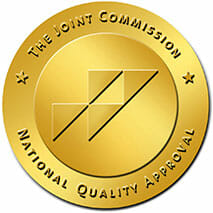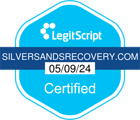
National Meth Awareness Day and Drug Rehab in Prescott
National Meth Awareness Day was created to help people understand the dangers of meth and help people struggling with addiction get the treatment they need. It is celebrated every November 30th. Silver Sands Recovery, a top-rated drug rehab in Prescott, AZ, continues this tradition and offers meth addiction treatment for people who can’t stop using meth on their own.
Why Meth Awareness Is Important
Methamphetamine is a highly addictive drug that can quickly lead to devastating consequences for people experimenting with it. According to the 2021 National Survey on Drug Use and Health, approximately 2.5 million people in the United States have used methamphetamine in the last month, and 1.6 million are living with a methamphetamine addiction.1
These statistics make one thing very clear about methamphetamine use: the vast majority of people who use meth will go on to develop an addiction. Most other drugs have a much smaller addiction ratio than last-month use, indicating that any meth use is a serious cause for public concern.
No one sets out to become addicted when they start using methamphetamine. However, not being armed with the knowledge of methamphetamine’s addictive potential and risk of severe consequences can lead people to dangerous drug experimentation. People can quickly go down a path of dangerous substance use that they may need professional addiction treatment to overcome.
How Meth Affects the Brain
Methamphetamine uniquely affects the brain compared to other addictive substances. All psychoactive drugs interact with the brain’s neurotransmitters, which are chemical messengers that carry reward, motivation, stimulation, or relaxation signals. However, methamphetamine affects nearly every aspect of your brain, permeating the brain cells themselves.
Drugs such as cocaine, marijuana, alcohol, and opioids all reach the brain and enter the regions between brain cells, known as the synaptic clefts. From there, brain cells interact with these drugs, either transporting them into the cell or altering their function in their presence.
But methamphetamine takes a different path: due to its unique structure, methamphetamine can permeate directly into brain cells and cause them to dump their chemical reserves, resulting in a cascade of effects.2
More than any other drug, methamphetamine hijacks the brain and causes dramatic changes in functioning. This can often lead to severe damage to brain cells, quickly lead to the hallmark brain changes associated with addiction, and lead people to struggle to cut down or stop methamphetamine use on their own.
Signs of Meth Use
Meth’s primary function is as a central nervous system stimulant. People using methamphetamine can show several signs of this stimulation, including:
- A sudden burst of energy
- Dilated pupils
- Talking at a rapid pace
- Appetite suppression
- Insomnia
- Grinding or clenching their teeth
- Profuse sweating
- Constantly moving, fidgeting, or being unable to sit still
- Intense focus on a particular task
These effects can last for several hours when a person uses meth once. But meth use also creates a powerful craving and urge to continue using methamphetamine, and people may go on prolonged meth binges lasting for days, often without sleeping at all.
Signs of Meth Addiction
People can become addicted to meth with just a few uses of this powerful drug. The signs of meth addiction are common to all substance use disorders and include symptoms such as:3
- Multiple failed attempts to cut down or stop meth use on your own
- Increasing tolerance for meth
- Invasive meth cravings
- Struggling at work, school, or home due to meth use
- Relationships damaged by meth use
- Using more meth than intended or for longer than intended
- Continued meth use despite harmful consequences
- Physical and psychological withdrawal symptoms if meth use suddenly stops
When people develop a meth addiction, they may need professional meth addiction treatment to recover. The addiction treatment program at our drug rehab in Prescott is designed from the ground up to help people overcome this debilitating disorder.
Consequences of Meth Addiction
The myriad of effects that meth causes on the brain and body will frequently result in long-term physical and psychological damage. Meth use is incredibly damaging to the body, and people can experience consequences such as:
- Tooth loss or damage due to clenching and dry mouth
- Rapid weight loss and malnutrition due to appetite suppression
- Long-term sleep challenges due to insomnia
- Chronic fatigue when not under the influence of meth
- Scarring and skin damage from picking while under the influence
But the mental health side effects from meth use are just as severe and can include:
- Experiencing auditory or visual hallucinations
- Depression
- An inability to focus
- Paranoia
- Anxiety
- Nightmares
Most of these effects will improve when people stop using meth and achieve recovery. Still, it takes targeted interventions on behalf of an addiction treatment team for most people to break free from addiction.
How Our Drug Rehab in Prescott, AZ, Can Help
Meth addiction is a growing problem in the United States, but there is hope for people suffering from this debilitating disorder. Meth addiction treatment is highly effective and can help anyone break free from the physical symptoms of meth addiction, learn how to deal with their life’s challenges and build stronger and healthier lives in recovery.
The meth addiction treatment program at Silver Sands Recovery offers each level of care needed for people to start a new life in recovery.
Overcoming a meth addiction isn’t easy, but it is possible, provided you get the treatment you need. Reach out to Silver Sands Recovery today by calling our admissions team or by filling out our confidential online contact form to learn more about our comprehensive treatment options and start your journey to recovery today.
Sources:
[1] https://www.samhsa.gov/data/sites/default/files/reports/rpt39441/NSDUHDetailedTabs2021/NSDUHDetailedTabs2021/NSDUHDetTabsSect1pe2021.htm
[2] https://www.ncbi.nlm.nih.gov/pmc/articles/PMC4349189/
[4] https://www.psychiatry.org/psychiatrists/practice/dsm
About the author:

Lisa Waknin is the Founder and Director of Silver Sands Recovery, located in Prescott, Arizona. Lisa started Silver Sands Recovery after immersing herself in the addiction treatment world for several years to figure out what could be done differently to help her daughter and others like her to overcome addiction and stay sober. She believes in a hands-on treatment approach, which includes taking someone out of their environment, providing a 90-day program in a structured environment. During treatment, clients not only recover physically but also learn to live their life again. Lisa is a sought-after expert speaker for recovery support groups, charities, schools, communities, and companies wanting to educate themselves on the explosion of opiate and heroin abuse in our country and the best way to understand, treat, and beat it.




